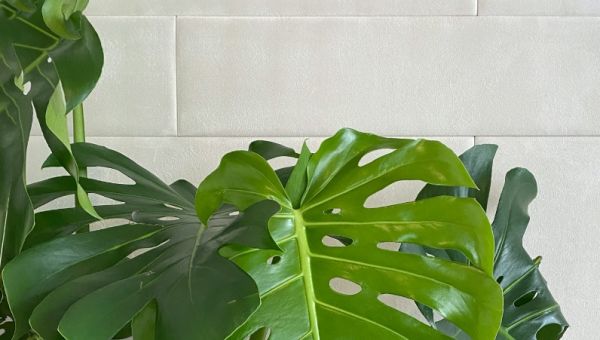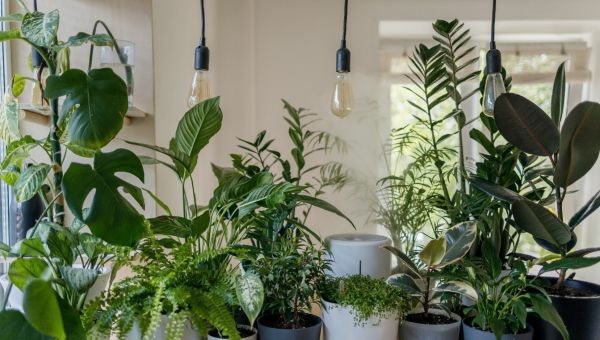Everything grows so well on balconies and in gardens here, that I wondered if anybody bothers to keep a plant indoors anymore in the corner or on a shelf.
Herbs are grown on windowsills sometimes, they can be a bit tender for the hot sun outside, and sometimes it's nice to track their progress if they are really small, and you can coax them along with some tender loving care until it's time to strip off a few leaves for your cooking pot.
But I remember a time when a home wasn’t complete without a spider plant hanging from a proudly home-made crochet basket in a corner, where the husband had risked life and limb up a stepladder to put a hook in the corner of the ceiling with the sincere hope there was a supporting joist behind the plasterboard ceiling. They had tiny white flowers and put out ‘offspring’ at the end of long drooping stalks which were so easy to cut off and plant afresh.
And rubber plants! There was always one in an office or in the dentist’s waiting room, often somewhat sad and limp in a corner, where someone had stuck a bamboo cane in the pot to help it stand up, or one of those moss-covered poles that would probably take root itself before doing its job.
Mother in Law's Tongue, also known as Snake Plant, so called as its patterns resemble the skin of a snake, was a popular plant that can actually be grown both indoors and outdoors. With tall slender leaves, they would look good in a pot on a desk, as a centerpiece for a table, and when they get too tall they can be re-homed on the floor in a corner of the room or moved outside into the garden or onto a balcony.
Top picks
Aspidistra – a Victorian favourite! Big wide satiny green leaves that grow directly out of the soil. They did well indoors, as in nature they grow in cooler shady spots under trees and shrubs, making them ideal for dark corners.
Swiss Cheese Plant – Monestra - is another that was popular, with shiny green heart-shaped leaves that developed holes in the leaves with age, giving it its name. It's not from Switzerland though, it comes from Mexico originally, and has become a bit of an invasive plant since being introduced to Hawaii apparently.
Christmas Cactus or Thanksgiving Cactus - Schlumbergera - was also popular as an indoor plant. A low growing succulent, it puts forth a show of colourful flowers at the end of each of the leaf-like pads. They will grow well in low light areas, and to encourage the blooms in November-December, they need to be moved into more direct sun, but not so much that it burns the leaves. Easy to propagate too.
Dieffenbachia, or commonly named Dumb Cane, is a good indoor plant, with green leaves veined in white, easy to keep going. It likes moist soil, but not soggy, and loves humidity, so might need misting now and again. Another pretty one is Agloanema, often called Chinese Evergreens, and these have delicately pink-tinged leaves – it’s a little trickier to keep going as it doesn’t like drafts or overwatering.
Growing plants indoors shouldn’t be overlooked – they add a very adult look to a small apartment, or flair to a big home, and by introducing colour and style, will take your décor to the next level. You don’t have to be a plant expert either, as they will all come with a little tag giving hints on upkeep. When you introduce plants into your life, they can even add a positive impact on your mental health, and an added bonus, by adding some green, they help purify the air in your home by filtering out everyday pollutants. But a word of warning – some people are moved to name their houseplants, and if this makes you feel silly, remember that it's perfectly normal to talk to your plants, and according to science, it’s a sign of intelligence, and more importantly, love. So go ahead – tell Spike how sharp he looks, or whisper sweet nothings to Elvis Parsley!
Marilyn writes regularly for The Portugal News, and has lived in the Algarve for some years. A dog-lover, she has lived in Ireland, UK, Bermuda and the Isle of Man.













